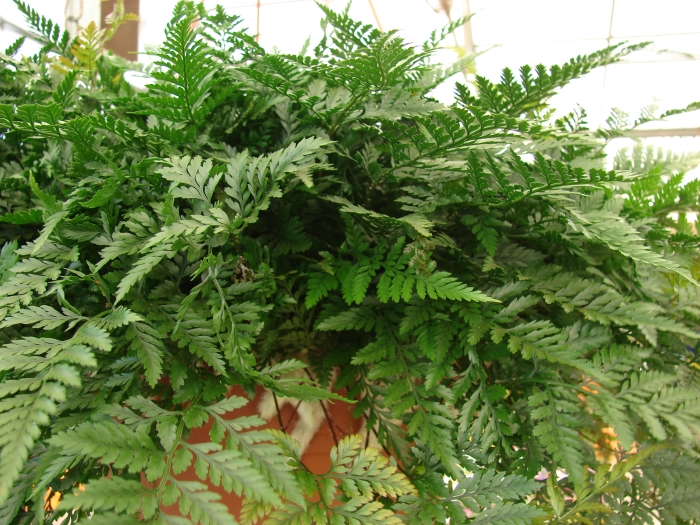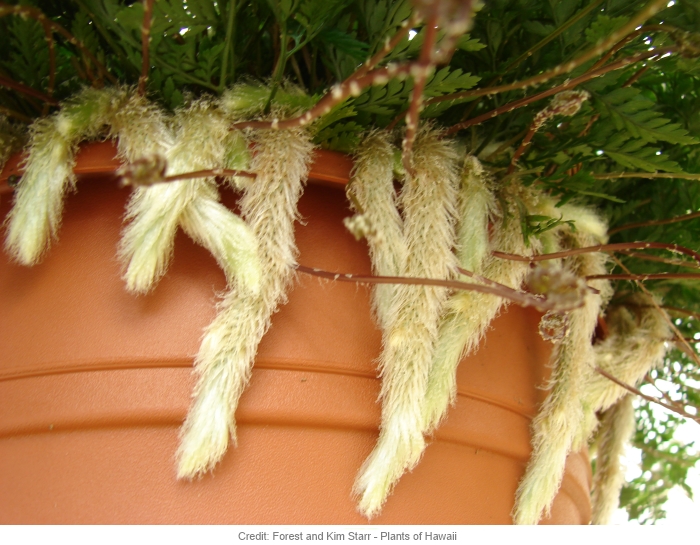





The Davallia fejeensis belongs to a genus of 40 plants that are epiphytic in nature, which means they grow on trees or within rock crevices taking moisture and nutrients from other sources "not soil" such as air, rain, trees and other debris.
Over the years we have learnt to grow these within our western homes by imitating the plants natural habitat. We've learned how to grow a group of ferns for some time now and the Rabbit's foot is one that will grow well, "if the correct conditions are provided". Moisture and the right amount of light is the rule of thumb here.
How it looks: The fejeensis is easily recognisable as a fern because of it's fronds (grow upright) that display gauzy or lace like leaflets. The small leaves are attached to kind of wiry stalks that grow from the visible rhizomes. These furry and yellowish brown rhizomes creep over the pot; they are main feature of this species.
It's important to keep in mind what pot the plant should be planted in so it can display it's rhizomes (within a hanging basket is common and a shallow pot).
Care level: Although the Rabbit's foot fern does seem to be a bit more resilient than many other ferns and less temperamental, I would treat it as a fern in terms of humidity. This means providing enough humidity that your likely to need to increase yourself and keep the soil moist.


Fronds yellowing and tips brown: Check to see if the air is too dry and the temperature is not too hot then increase humidity levels.
Pale fronds and plant lacking growth: The likely cause here is the need for fertilizer within the soil. Pale fronds can also relate to the plant being exposed to too much sunlight or even not enough.
Limp fronds: The most likely cause is over watering. Also check the temperature is not too cold.
Copyright © www.100flowers.win Botanic Garden All Rights Reserved